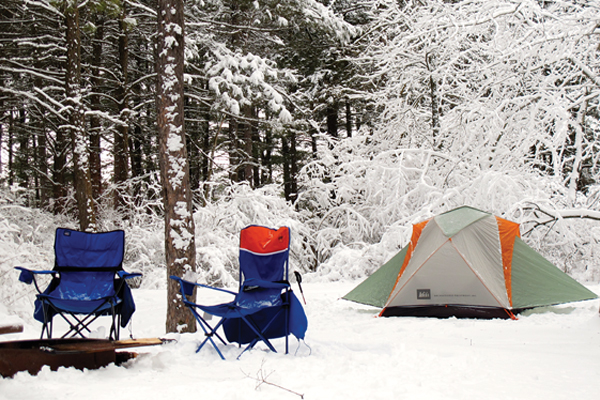How to survive the wilderness—and the cold
Photo courtesy of Creative CommonsCold mornings, early sunsets, and a lack of money following Boxing Day shopping have you bored, tired, and broke.
The right remedy to keep your sanity might be a winter adventure. Winter camping can be a great experience. It’s far from crowds and the busyness of the new semester, and it’s the perfect opportunity to test your resilience.
But experiencing the north doesn’t come without its hazards, and should you be daring enough to sleep outdoors in chilling temperatures, you should be prepared.
You’ll need to thoroughly research the area where you want to have your adventure. Keeping in mind weather changes and having a rough schedule can help with planning. Unlike summer camping, a lack of planning can cause a lot more hardships, made exponentially worse by the cold weather.
The most important factor to enjoying your trip lies in your ability to stay warm, using layers of clothing effectively.
Layering is essential to monitoring your body heat, increasing the amount worn or shed, depending on the activity. An increased amount of layers act as an insulator you can control in order to limit the amount you’ll sweat when overheating. Your body is the heat source; the clothing only traps the heat. If you have too much clothing on, you will begin overheating, and the moisture from sweating will make you colder.
Pay close attention to the material when selecting layers. Cotton is impractical in the winter. It absorbs moisture and the water occupies the space previously occupied by dead air. This means a high chance of cooling, and a garment that’s almost impossible to dry out.
Most importantly the key to staying warm is keeping your head, hands, and feet warm. Covering your face is important since it’s easily susceptible to frostbite. A balaclava can help solve this problem. Mittens provide more heat than gloves, and it’s useful to have an inner mitten insulating your outer shell.
When choosing a pack, try looking for one with an internal frame. The lower centre of gravity allows you to maintain better balance while snowshoeing or skiing by allowing for more movement.
Sleeping bags for winter camping should be rated to temperatures below what you will likely experience if you want to be comfortable. Having a mummy-style sleeping bag is ideal as the hood can further insulate your body from cold temperatures. You also need to insulate yourself from the underlying snow. Foam pads or inflatables work well. The insulation should be a least a half-inch thick. It’s best to use full-length pads so your entire body is insulated.
You also have to take into account the demands of the cold weather. Having a stove is the easiest method to cook, as preparing food can take longer given the temperature.
Also consider your caloric intake, since your body will be burning an increased amount of calories as it works harder to heat itself. Timed meals and increased water intake are the best tools to avoid hypothermia.
Once you’re bundled up, packed, and ready to go, enjoy your stay in the great white north.





